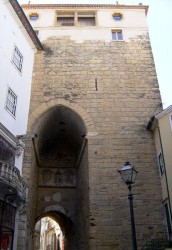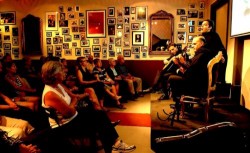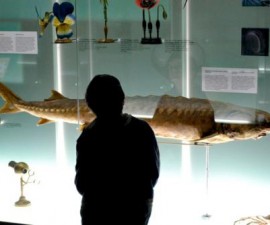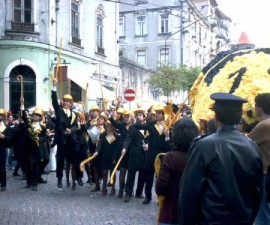The ancient city of Coimbra has a thriving cultural scene, thanks both to its rich historical past and its ever-growing student population. There is much to do and see and visitors, will delight in immersing themselves in the history and culture of one of Portugal’s most important cities.
Coimbra is home to Portugal’s oldest university, established back in the 12th century, and it is to the university complex that most visitors head when they set out on their sightseeing tour of the city.
The Arco de Almedina is the gateway to the old university, through which students and visitors have passed for centuries on their way to the ancient faculties of learning.
The medieval tower above the Arco de Almedina has now been converted into a small museum, which is home to a plaster reproduction of Coimbra old town as it was laid out in medieval times, complete with its castle set within the old town walls with their many towers.
The medieval tower offers some excellent views across the city, although the best are probably directly through the stone floor. Known as “mata-caes”, or dog killers, so the story goes, these holes were traditionally used for pouring hot oil on unsuspecting enemies below as they tried to make their way unnoticed through the arch.
Heading into the university campus you will find a small museum, known as the Academic Museum, which gives an interesting insight into the academic history of Portugal’s oldest seat of learning. Thousands of exhibits include numerous trophies won by students, faculties and sporting teams and there are some exquisite azulejos (traditional ceramic tiles) adorning the wall that merit a visit to the Academic Museum in their own right.
So vast is the scale of the university that there are probably a dozen such small museums dotted around its campus, with academics, students and visitors alike remaining blissfully unaware of their existence. It is worth taking the time to hunt them out.
Thankfully once such museum — or rather library — is not so hard to find and is resolutely on the itinerary of just about every visitor to Coimbra. Located in Paço das Escolas in the university old town, the Joanina Library is regarded as one of the most beautiful libraries in the world. It was commissioned during the reign of King Joao V, after whom it is named, and work began in 1717 under the architect Gaspar Ferreira.
The Joanina Library is a must-visit destination, both for the wide range of books (some 250,000 are housed here) and for the exquisite building in which they are housed.
Rows of ornate book cases and beautifully carved reading tables line the rooms and there is some lovely gilt decoration and ornate doorways.
The collection ranges from the 12th century to the end of the 17th century, mostly covering topics such as law, philosophy, civil rights and biography. The basement even houses a small prison, where students and academics who were convicted by the university’s own court of law were sentenced to detention.
Leaving the university behind, there is much more of cultural value to admire in Coimbra besides. The Machado de Castro Museum stands on the site of a former palace, which in turn was built on the site of the ancient Roman forum of Aeminium — the Roman predecessor to Coimbra.
The Machado de Castro Museum is named after the famous sculptor who was born in this area of Portugal in 1731. The collection includes sculpture, ceramics, paintings, textiles and tapestries and a wide range of ecclesiastical pieces — some of the most important in the country. The two lower floors are given over to the remains of the Roman forum, providing a fascinating insight into the long and varied history of Coimbra.
For a wider Portuguese flavour, head to Portugal dos Pequenitos, a miniature “world” which recreates some of the most famous Portuguese monuments from ancient cities such as Coimbra and Tomar, as well as the more “modernised” metropolitan areas of Lisbon and Porto.
The islands and the new world are not forgotten, with sections given over to the other areas of the world over which Portugal has had or continues to have a political, cultural or linguistic influence.
No trip to Coimbra would be complete without sampling its unique version of the traditional Portuguese Fado music. Head to Fado ao Centro, where entrance to the photo exhibition about the city is free. By night, Fado ao Centro hosts Fado shows with a recreation of a live serenade to give visitors a true feel for this long-standing Portuguese tradition.






